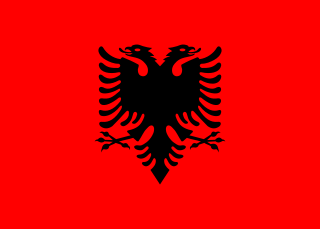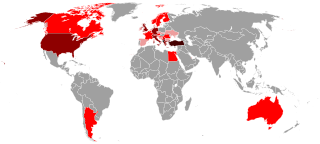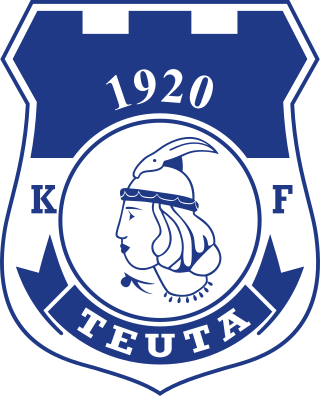
Albania, officially the Republic of Albania, is a country in Southeast Europe. It is located in the Balkans, on the Adriatic and Ionian Seas within the Mediterranean Sea, and shares land borders with Montenegro to the northwest, Kosovo to the northeast, North Macedonia to the east and Greece to the south. With an area of 28,748 km2 (11,100 sq mi), it has a varied range of climatic, geological, hydrological and morphological conditions. Albania's landscapes range from rugged snow-capped mountains in the Albanian Alps and the Korab, Skanderbeg, Pindus and Ceraunian Mountains, to fertile lowland plains extending from the Adriatic and Ionian seacoasts. Tirana is the capital and largest city in the country, followed by Durrës, Vlorë, and Shkodër.

The Albanians are an ethnic group native to the Balkan Peninsula who share a common Albanian ancestry, culture, history and language. They are the main ethnic group of Albania and Kosovo, and they also live in the neighboring countries of North Macedonia, Montenegro, Greece, and Serbia, as well as in Italy, Croatia, Bulgaria, and Turkey. Albanians also constitute a large diaspora with several communities established across Europe and the other continents.

The Aromanians are an ethnic group native to the southern Balkans who speak Aromanian, an Eastern Romance language. They traditionally live in central and southern Albania, south-western Bulgaria, northern and central Greece and North Macedonia, and can currently be found in central and southern Albania, south-western Bulgaria, south-western and eastern North Macedonia, northern and central Greece, southern Serbia and south-eastern Romania. An Aromanian diaspora living outside these places also exists. The Aromanians are known by several other names, such as "Vlachs" or "Macedo-Romanians".
The Kanun is a set of Albanian traditional customary laws, which has directed all the aspects of the Albanian tribal society.

Greater Albania is an irredentist and nationalist concept that seeks to annex the lands that many Albanians consider to form their national homeland. It is based on claims on the present-day or historical presence of Albanian populations in those areas. In addition to the existing Albania, the term incorporates claims to regions in the neighbouring states, the areas include Kosovo, the Preševo Valley of Serbia, territories in southern Montenegro, northwestern Greece, and a western part of North Macedonia.

Klubi i Futbollit Teuta, commonly referred to as Teuta, is an Albanian professional football club based in Durrës. The club competes in the Kategoria Superiore, the top tier of Albanian football. Their home ground is the Niko Dovana Stadium.

The Albania national football team represents Albania in men's international football. It is governed by the Albanian Football Association (FSHF), the governing body for football in Albania. It is a member of UEFA in Europe and FIFA in global competitions. The team's colours reference two national symbols: the double-headed eagle and the country's tricolor. Their supporters are colloquially referred to as the Tifozët Kuq e Zi.

The League of Lezhë, also commonly referred to as the Albanian League, was a military and diplomatic alliance of the Albanian aristocracy, created in the city of Lezhë on 2 March 1444. The League of Lezhë is considered the first unified independent Albanian country in the Medieval age, with Skanderbeg as leader of the regional Albanian chieftains and nobles united against the Ottoman Empire. Skanderbeg was proclaimed "Chief of the League of the Albanian People," while Skanderbeg always signed himself as "DominusAlbaniae".

The Battle of Albulena, also known as the Battle of Ujëbardha, was fought on 2 September 1457 between Albanian forces led by Skanderbeg and an Ottoman army under Isak bey Evrenoz and Skanderbeg's nephew, Hamza Kastrioti.

KF Luftëtari, also known as Luftëtari FC or simply Luftëtari, was an Albanian football club based in Gjirokastër, southern Albania. The club was founded on 1926 as Shqiponja Gjirokastër and has played at its home ground, the Gjirokastra Stadium, since 1973. They last competed in the Kategoria Superiore, the first tier of football in the country.

KF Tomori is an Albanian football club based in the city of Berat. The club's home ground is the Tomori Stadium and they currently participate in the Kategoria e Dytë.

Gjergj Kastrioti, commonly known as Skanderbeg, was an Albanian feudal lord and military commander who led a rebellion against the Ottoman Empire in what is today Albania, North Macedonia, Greece, Kosovo, Montenegro, and Serbia.

The German occupation of Albania occurred between 1943 and 1944 during World War II. Before the armistice between Italy and the Allied armed forces on 8 September 1943, Albania had been in a de jure personal union with and was de facto under the control of the Kingdom of Italy. After the armistice and the Italian exit from the Axis, German military forces entered Albania and it came under German occupation, creating the client-state, the Albanian Kingdom.
Albanian nationalism is a general grouping of nationalist ideas and concepts generated by ethnic Albanians that were first formed in the 19th century during the Albanian National Awakening. Albanian nationalism is also associated with similar concepts, such as Albanianism ("Shqiptaria") and Pan-Albanianism, that includes ideas on the creation of a geographically expanded Albanian state or a Greater Albania encompassing adjacent Balkan lands with substantial Albanian populations.
Miss Universe Albania is a national Beauty pageant in Albania. The pageant was founded as Miss Albania in 2002, until rebranding as Miss Universe Albania in 2006.
The Battle of Torvioll, also known as the Battle of Lower Dibra, was fought on 29 June 1444 on the Plain of Torvioll, in what is now Albania. Gjergj Kastrioti Skanderbeg was an Ottoman Albanian general who decided to return to his homeland and take the reins of a new Albanian league against the Ottoman Empire. He and 300 other Albanians who fought in the Battle of Niš deserted the Ottoman Army and made their way to Krujë, which quickly fell due to subversion. He then formed the League of Lezhë, a confederation of Albanian princes united in war against the Ottoman Empire. Realising the threat, Murad II sent one of his most experienced generals, Ali Pasha, to crush the new state with a force of 25,000 men.

Veliki Trnovac is a village in the municipality of Bujanovac, Serbia. According to the 2002 census, the village had a population of 6,762. Of these, 6,730 (99,52%) were ethnic Albanians, 1 (0,01%) Bulgarian, 1 (0,01%) Bosniak, and 12 (0,17%) others. The village is home to the football club KF Tërnoci.
Doliće is a village in the municipality of Sjenica, Serbia. According to the 2002 census, the village has a population of 322 people.

Boroštica is a village in the municipality of Tutin, Serbia. According to the 2002 census, the village has a population of 379 people.

The Insurgency in Kosovo began in 1995, following the Dayton Agreement that ended the Bosnian War. In 1996, the Kosovo Liberation Army (KLA) began attacking Serbian governmental buildings and police stations. This insurgency would lead to the more intense Kosovo War in February 1998.















